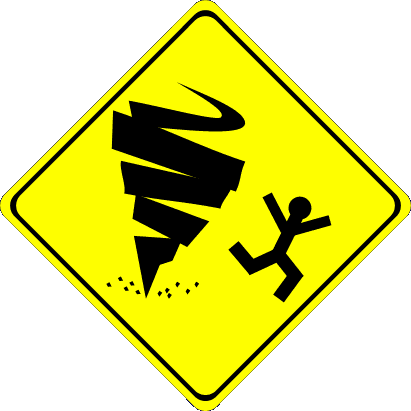 |
|
Welcome to the Earthquake Page!
|
|
| Homepage | |
| Concept Map | |
| Curriculum Web | |
| WebQuest | |
| Tornado | |
| Hurricane |
How many fault lines are there in California?
There are too many fault lines to count. Once scientists thought there were only 4 or 5, but now they know there are collaterals, faults that branch off major fault lines. For example, the devastating Whittier earthquake of 1987 occurred along a fault line scientists didn't even know was there.
What causes harthquakes?
Earthquakes are naturally occurring phenomena. Most are caused by the constant movement between the Earth's plates.Along the San Andreas Fault they are caused by the Pacific Plate sliding past the North American Plate. Sometimes, two plates catch and energy builds up. At a certain point, something has to give. In a sudden, violent jerk, the two plates grate against each other, sending shock waves through the earth. This is an earthquake.
Will Northern California have another, more powerful quake?
Yes, there is a very good chance that within 50 years there will be another one. Here's why: When there is an earthquake, energy is released in one area along a fault, or crack in the Earth's crust. However, the energy continues to build in other areas. Energy keeps building up until eventually there is another earthquake elsewhere along the fault. Scientists monitor the energy with instruments they sink into the ground.
What are the chances of another big quake in California in the next 15-30 years?
Scientists predict there is a 30 to 50 percent chance of another big earthquake north of Los Angeles in the next 15 to 30 years.
How can you tell the difference between an earthquake and aftershocks?
The earthquake sends out the strongest shock waves. The aftershocks are what occur later and in the same place along the fault line. As time passes, the aftershocks become less strong. Scientist predicted that the aftershocks from the October 17, 1989, earthquake would continue for one to two years, though many may have been too small to feel.
Are there ways to warn people an earthquake is about to happen?
Scientists are looking for ways to predict the Big One, or at least to quickly get more accurate data about earthquakes. At the California Institute of Technology, scientists are investigating a system of instruments known as TERRAscope. This is a terrestrial telescope that will let researchers look into the earth. Scientists hope TERRAscope and other devices may make it possible someday to predict earthquakes.
